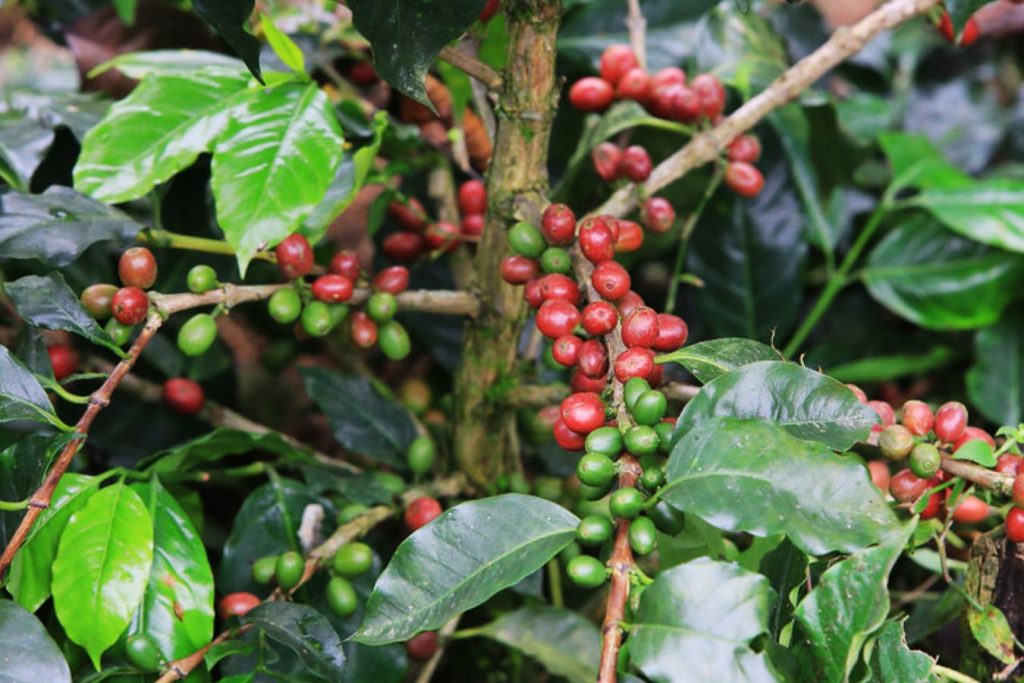What is Sarchimor?
Sarchimor is a cross between the Timor Hybrid and Costa Rican Villa Sarchi that is commonly cultivated in both Costa Rica and India. The plant is resistant to coffee leaf rust and berry or stem borer because of its ancestor, Hibrido de Timor.
According to the line, vigor, and level of output, the Sarchimor has a small, green, bronze, or both, shoot that adapts well to low- and medium-altitude regions. The cup quality is decent at low and middle altitudes.
Overview of Sarchimo coffee
Similar to a brother – the Catimor variety (with the name T8667) has the same father as the Timor Hybrid associated with the early days of the Central American Regional Coffee Alliance (PROMECAFE) – founded in 1978 with the sponsorship of Culture USAID’s Central America Regional Office (ROCAP) and Agronomic Institute of Campinas (IAC) in Brazil to respond to the threat posed by the recent emergence of coffee leaf rust in the region.
It is important to note that, contrary to common belief, the ” Sarchimor ” breed is not a distinct, genetically distinct breed. Instead, it is a group of many different varieties of similar origin : Cuscatlec, Iapar 59, Limani, Marsellesa, Obata Rojo, Parainema.

Groups like Catimor and Sarchimor are Arabica varieties that are not “pure” because they possess genetic traits from another species – mainly C. canephora ( Robusta ). The original of this term is Introgressed – i.e., Near-sex hybrid, also known as close-breed hybrid)
History of the Sarchimor coffee
From 1958 to 1959, the Portuguese Coffee Institute (CIFC), famous for its research on coffee leaf rust, received numerous Timor Hybrid seeds from the island of Timor. Hybrid Timor is a natural hybrid between trees C. arabica and C. camphor out (i.e., Robusta) occurs naturally on the island of Timor in the 1920s. Genetic traits from Robusta gave Timor Hybrid rust resistance very good.
From the two seed lots received by the CIFC, breeders in Portugal started working to create new coffee varieties that are disease resistant yet compact in stature to improve top yield. in a cultivated area. One of the above Timor Hybrids, called HDT CIFC 832/2, was crossed with the compact Villa Sarchi variety to create the H361 hybrid, one of the first “Sarchimor” plants to be bred.
Dispersion of the Sarchimor genus
After some initial testing at the IAC in Brazil, in 1971, CIFC sent the H361 for testing at test centers in several countries, including Colombia, Costa Rica, El Salvador, Guatemala, Honduras, Mexico, Nicaragua, Panama, Dominican Republic, Laos, Malawi, Mozambique, Sao Tome, Thailand, and Venezuela. To deal with the coffee rust crisis.
In Central America, H361 was first sent to the Tropical Agricultural Research Station – (CATIE) in Costa Rica. These early crops were designated as T5296 (where “T” represents Turrialba, the headquarters of CATIE). Researcher AJ Bettencourt led the work of genetic selection on T5296.
Breeds Sarchimor
From initial trials in CATIE, T5296 was sent to national breeding programs in the Central America region. In Honduras, selected generations of T5296 are known as Parainema. In El Salvador, these generations of hereditary selection are called Cuscatleco.
In Puerto Rico, the Sarchimor tree is called Limani. Ultimately, the selection process in Brazil resulted in the Obata, Tupi, and IAPAR 59 varieties. In addition, many newer F1 hybrids were created by crossing the T5296 with Ethiopian indigenous coffee varieties such as Centroamericano, Milenio, and Mundo Maya…
Keywords: view show abstract, request sample cart, organic coffee brands, view coffee resistance, coffee durable resistance, grown organic coffee, coffee breeding resistance, organic coffee certification, leaf rust caused, coffees, susceptible
>>> Caturra Coffee – Origin & Biological Characteristics
Reference source

